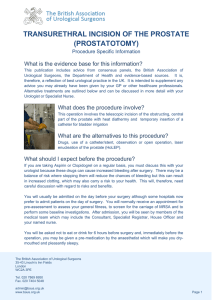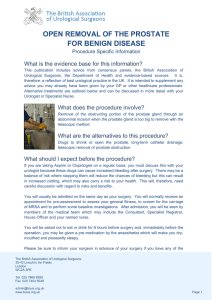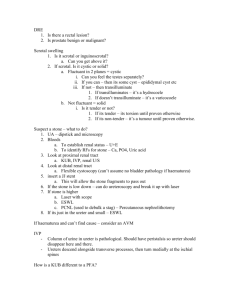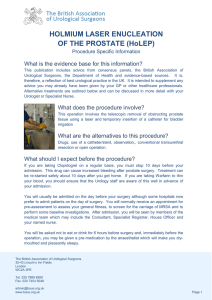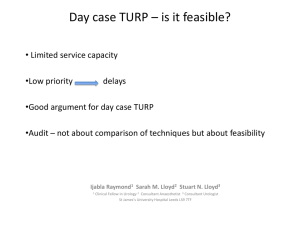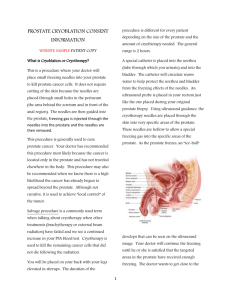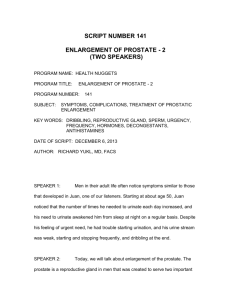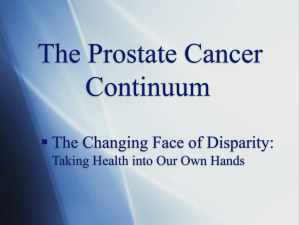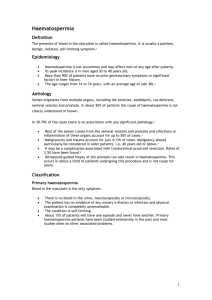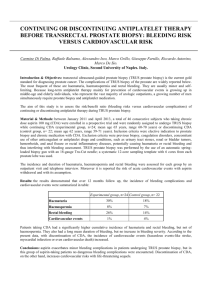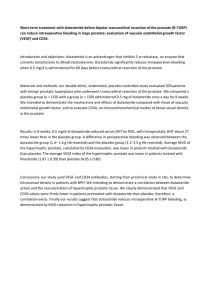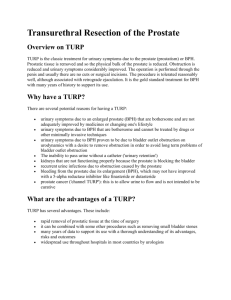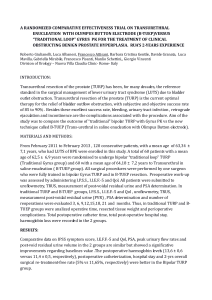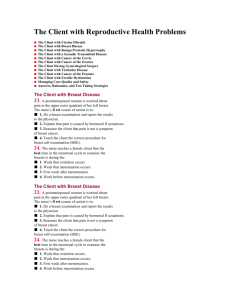commonly bleeding
advertisement
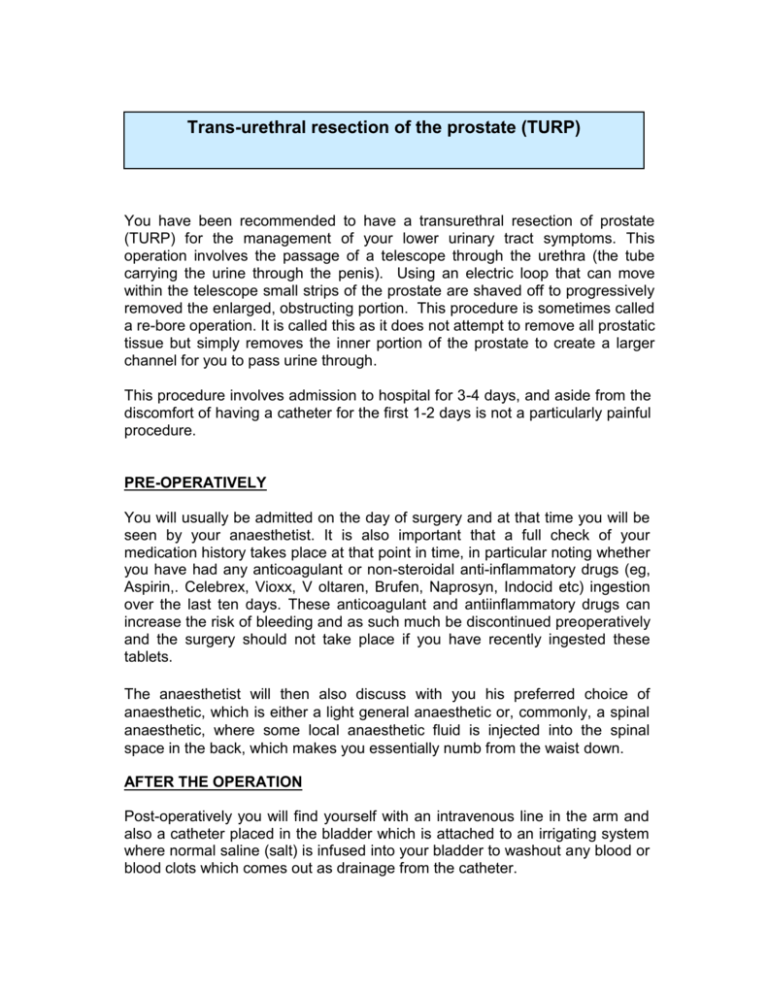
Trans-urethral resection of the prostate (TURP) You have been recommended to have a transurethral resection of prostate (TURP) for the management of your lower urinary tract symptoms. This operation involves the passage of a telescope through the urethra (the tube carrying the urine through the penis). Using an electric loop that can move within the telescope small strips of the prostate are shaved off to progressively removed the enlarged, obstructing portion. This procedure is sometimes called a re-bore operation. It is called this as it does not attempt to remove all prostatic tissue but simply removes the inner portion of the prostate to create a larger channel for you to pass urine through. This procedure involves admission to hospital for 3-4 days, and aside from the discomfort of having a catheter for the first 1-2 days is not a particularly painful procedure. PRE-OPERATIVELY You will usually be admitted on the day of surgery and at that time you will be seen by your anaesthetist. It is also important that a full check of your medication history takes place at that point in time, in particular noting whether you have had any anticoagulant or non-steroidal anti-inflammatory drugs (eg, Aspirin,. Celebrex, Vioxx, V oltaren, Brufen, Naprosyn, Indocid etc) ingestion over the last ten days. These anticoagulant and antiinflammatory drugs can increase the risk of bleeding and as such much be discontinued preoperatively and the surgery should not take place if you have recently ingested these tablets. The anaesthetist will then also discuss with you his preferred choice of anaesthetic, which is either a light general anaesthetic or, commonly, a spinal anaesthetic, where some local anaesthetic fluid is injected into the spinal space in the back, which makes you essentially numb from the waist down. AFTER THE OPERATION Post-operatively you will find yourself with an intravenous line in the arm and also a catheter placed in the bladder which is attached to an irrigating system where normal saline (salt) is infused into your bladder to washout any blood or blood clots which comes out as drainage from the catheter. Usually on the first post-operative day, as long as your blood tests are satisfactory, your intravenous line would be removed and as long as you were drinking an adequate amount of fluid and there was minimal bleeding from the catheter the irrigation would be removed. On the second post-operative day, as long as there is minimal bleeding, the catheter would be removed. At that point in time it is quite common to notice a bit of bleeding and mild discomfort when passing urine as well as a degree of urinary urgency. These all settle with time, usually over the first week to ten days. On the third post-operative day as long as you are voiding satisfactorily you would normally be discharged home. RISKS OF TURP Although this is a commonly performed and usually routine procedure, like any operation there is a small risk of complications. These are outlined below: EARLY COMPLICATIONS 1. Medical Peri-operative complications of surgery and anaesthesia, including unexpected events such as heart attacks, clots in the legs, pulmonary emboli (clots that travel to the lung), etc. 2. Bleeding is common in the early post-operative phase and will early clear after 24-48 hours. Transfusions are rarely required following transurethral resection of prostate and your blood count will be monitored once again with a blood test on the first postoperative day. 3. Urinary urgency – immediately after the catheter is removed you may find you are rushing to pass urine with little warning. This is almost always temporary and as the bladder muscle adjusts to being ‘unblocked’ this symptom usually settles over a period of 1-2 months. Medication can be given to reduce this if it is particularly severe. LATE COMPLICATIONS 1. Delayed bleeding - a secondary haemorrhage can occur anywhere from 7-21 days postoperatively. This often follows a period of passage of clear urine and with the movement of a blood clot on the surface of the prostate, heavy bleeding once again occurs. Should this occur it is imperative to rest and increase fluid intake, however, if it is persistent you should contact your urologist who may need to consider readmission to hospital. On rare occasions it is necessary to return to the operating room to control this secondary bleeding. 2. Infection - urinary infections can occur both in the form of a cystitis (bladder infection) or in the form of genital infections, namely epididymitis (the organ that sits immediately behind the testicle). Both of these are readily treated with oral or intravenous antibiotic therapy. 3. Reduced erections - there is some controversy as to whether prostate surgery in fact causes erectile dysfunction or whether these conditions co-exist within the same patient. Nonetheless, most studies would suggest that there is approximately a 10-20% risk of erectile dysfunction which is greater for men who have pre-existing problems rather than for men who are totally potent pre-operatively. The range of dysfunction can range from a minor decrease in potency to full impotence. Obviously should this occur all options regarding ongoing management will be discussed with you post-operatively. 4. Retrograde ejaculation - The muscle at. the neck of the bladder normally closes to prevent sperm from entering the bladder during ejaculation. Following prostatic surgery, this is disrupted and as such it is common for your ejaculate fluid to go backwards into your bladder rather than out the end of the penis. This is not dangerous and does not alter the sensation of orgasm but results in a ‘dry’ ejaculation which therefore affects your fertility. 5. Incontinence - incontinence occurs roughly in 0.5 - 1 % of individuals following a transurethral resection of prostate. The degree of leakage is usually mild but can be more severe in rare cases. This may ultimately require the use of regular pads to control leakage. 6. Urethral stricture/Bladder neck contracture - as with all surgical procedures, wounds heal with scar tissues and this surgery is no different to any other. Unfortunately a circular scar can sometimes contract down to a very small pinhole which is called.a stricture or contracture. On occasions this may require further surgery to either dilate the stricture or to formally cut the stricture open using a knife down the telescope. This may occur in approximately 5% of cases. 7. Regrowth - as mentioned earlier, only the inner portion of the prostate is removed and as such residual prostatic tissue may re-grow over time. There is approximately a 20% chance of requiring a second TURP operation within the next decade due to this phenomenon. POST-DISCHARGE CARE There are no restrictions to eating or drinking, however you will be encouraged to maintain your fluid intake, especially if there is still a minor amount of bleeding in your urine. As the bleeding settles it would be reasonable to cut back on the fluid intake once again. All forms of straining should be avoided, in particular lifting heavy objects and straining at the bowel. It is far more preferable to use a laxative to assist with the bowel movements in this early post-operative period rather than to strain. Straining does increase the risk of a secondary bleed and as mentioned earlier this would need to be reported if it does not subside quickly. Whilst there is the risk of a secondary bleed, namely the first two to three weeks, heavy physical exertion should be avoided, including sports, but driving short distances is permissible. FOLLOW-UP You will normally have a follow up appointment with your urologist 4-6 weeks following discharge and if everything is progressing satisfactorily, a further follow up appointment three months after that initial appointment. At that appointment your pathology results will be discussed as the prostate pieces are sent off to the pathologist for evaluation.


